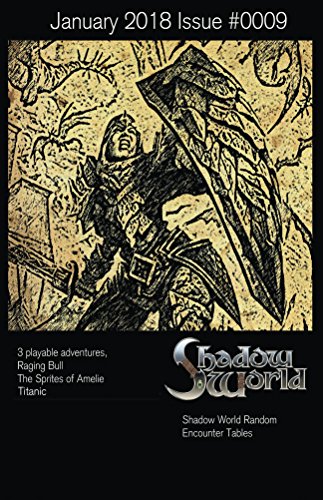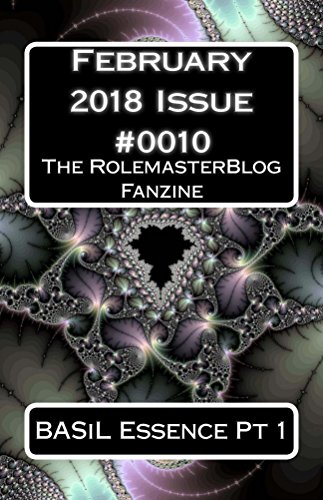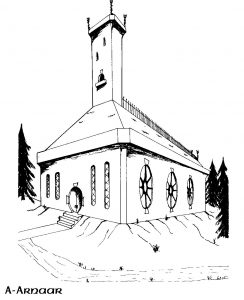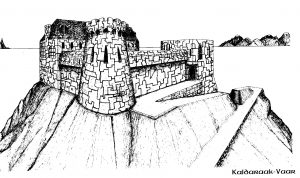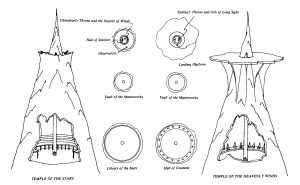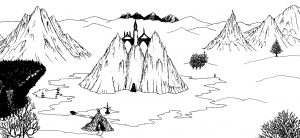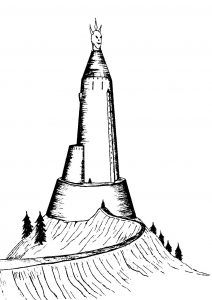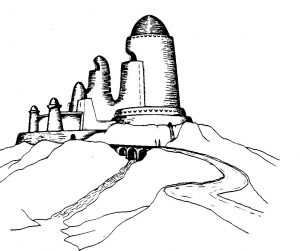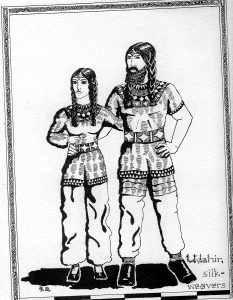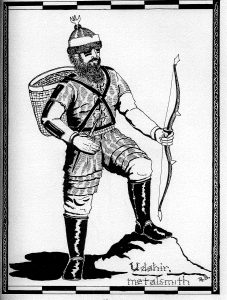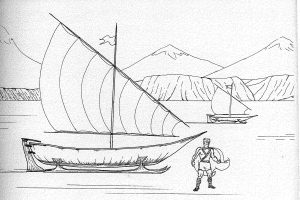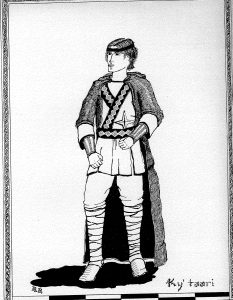There has been some discussion in the forum and in the blog of the RMU 101+ success rate vs. the RM(#) 111+ success rate. I always liked the idea of having absolute success being more difficult to attain, i.e.: 111+ and here are some reasons why.
Adventurers in the gaming world, any world not just RM, are of heartier stock. They have attributes, qualities, skills, items, what not, that set them above the rest of the average society. There is something that makes them better suited to the adventuring profession than the average Joe and that is why they are adventurers. If not, then ANYONE could be an adventurer and no one would be in town to make society work. There wouldn’t be a society. If the average individual succeeds on 101+ in their real-world, average lives, then the rigors and dangers of adventuring should be more difficult for that same person to achieve that same success. In the adventuring world, when compared to the average world, 101+ simply won’t cut it. An average person not suited for adventuring should have to try harder to gain the success an adventurer gains because they wouldn’t have the better than average stats or items or blessings the adventurer has.
RM is D100, percentile. With that, 55% is roughly average. I say roughly because the fumble range varies with different weapons, maneuvers, difficulties, and take up the lower end of the range and open ended rolls take up the upper range of the dice rolls, so for the sake of argument and for keeping the numbers easier to manage, I’ll say 55-ish. If a player can roll a 46+ and break the 101+ threshold for Absolute Success, it’s easier than flipping a coin. To me, that isn’t an accurate representation of the type of game RM (any edition) was developed to be. The skills and the development of those skills, the stats and modifiers, lend to the “need” to develop skills with DP’s, unlike other game systems which simply require the “choosing” of a skill category (Parry, Power Strike, Back Stab, etc.) but that is a completely different game mechanic and not one based on percentile. In all fairness, it’s comparing apples and oranges, or maybe lemons and limes… very similar, but definitely not the same thing. This comparison will come up again at the end and may be clearer by then. Hopefully.
By having Absolute Success at 111+, the DP’s become more valuable as the player has to determine how many 5%-ranks are “enough” and if the value of purchasing skill ranks 11-20 at a 2% value at the same DP cost is worth the investment. Is it more important to invest in a new skill or to continue with just one or two more ranks in the existing skill?
The players who have invested 10 ranks at 5% have a 50% chance of success right off the bat (assuming the DP was available to invest that heavily into a skill), then add stat bonuses and other possible bonuses for a value respectably above 50%, say 60%-65%. Remember, the “average adventurer” is already a cut above the “average citizen.” Even with above average stats 65-74 range, the stat bonus is still +0. *- I don’t have the chart in front of me to be more precise.
Stat bonuses, level bonuses, and “other” bonuses (Saddle of Riding, Boots of Traceless Passing, Cloak of Camouflage, +10 Lock Picks, etc.) have a wide and varying range so conservatively I’ll suggest 10%-15%? Any player willing to spend more DP in skill ranks 11-20 should have a better chance of succeeding than someone who has only invested lightly and that PC would hopefully (ideally) have the items to augment that skill. It should be more difficult for the 5-ranks PC to achieve Absolute Success than it is for the 15-ranks trained PC regardless of the numerical value Absolute Success has been assigned, 101+ or 111+. By having only 101+ as the threshold, it just became considerably easier for the lesser trained PC to achieve what the better-trained PC can achieve and for the better trained PC, anything over 101+ is irrelevant.
RM2 has plenty of ways to get additional bonuses added onto a skill to help the adventurer break the 111+ threshold. Special Items Category (+5 to +20 magic or non-magic item). Skill at Arms or Skill at Magic background option table for example: +10 to +25 to a stat bonus, +25 to all Adrenals, etc. At level 5, when a PC could have 10-12 skill ranks (50%-54%), then add in Stat Bonus (+10 to +15), and then add in Profession Level Bonus (possibly +5 to +15), cracking that 111+ threshold shouldn’t be difficult for an adventurer, save for an unfortunate dice roll of course.
When I first saw that 111+ was the Absolute Success threshold, many moons ago, I thought it was ingenious. Players had to invest more into becoming very good, not simply lucky with a dice roll. With open-ended rolls, there is still a chance for the lesser trained PC to reach Absolute Success. Sometimes someone just gets plain lucky and succeeds. It happens in real life all the time – Dumb Luck. Compare this to the Olympics. Any number of athletes (or PCs) can train (buy skill ranks), be good enough to make the Olympics (or to go Adventuring), and complete the race (or slay the bad guy). But the athletes who put more time training (bought more skill ranks) will have a better chance of getting a medal (ranks 11-20, that extra 2% chance). Yes, physiology (RM stats) will have an impact, but completing the race is not the same as getting a bronze medal (partial success), getting a silver (near success), and getting the gold (absolute success). Fumbled dice rolls? Certainly. The Korean speed skater favored to win but fell twice. Lucky open-ended rolls? The USA cross country ski team that edged out for the gold. Women’s Hockey, USA vs. Canada. I would argue two fantastic teams each with 20+ ranks in skills, superior stats, great equipment, coaching (Tactics)… and it came down to a shootout! A real knock ‘em down, drag ‘em out donnybrook! In the end, one could say the game winner came from the player who invested just a couple more ranks into the 21-30 range of skill ranks in Shooutout skill and that extra 1% helped her edge out the opposing goalie.
I’ve had players over the many years I’ve been playing, actually say “I’m not going to buy any more ranks. 50% chance is good enough,” and that is roughly 50% total after all the stats and bonuses have been added in, not 10 ranks at 5%. By lowering the threshold to 101+ it reinforces that 50% breakpoint and while it will certainly free up DP for other skills, I think it cheapens the value for the players who want to invest more DP into skills so be a specialist of sorts and it actually discourages investing deeper into skills. By having the lower threshold, there is no longer a need to invest. This tends towards the DPs being spent on more skills rather than specializing in a skill. Everyone is a jack-of-all-trades and master of none.
Consider the lemons/limes analogy once more. Any PC can get the Parry Skill, the Power Stoke skill, the Tumbling skill simply by selecting it at level-up. Then every single player who opted for the skill can do it with the exact same chance of success (D20 vs. 15). That isn’t skill development in the same sense that RM develops skills. There is no chance to get better at parrying. There are no points to invest in it to help you become better at parrying after you’ve chosen it. Lemons to limes, RM offers the opportunity for anyone to learn a skill but they have to invest in that skill for it to be of reliable use to them. Rolled a 37? Luckily, you invested deeply in Locate Secret Opening and had 75 points total to add to your roll.
Lowering the Absolute Success value, to me, feels like RM is moving away from skill development and more towards jack-of-all-trades. It’s a stretch of the imagination, I’ll admit, and I’m adding poetic license to illustrate my point, but if all the players only aim for 50% because they only need to roll 51+ to succeed, then they spread out those skills and aim for 50% across the board. With the stat, level, and professional bonuses tacked on, that equates to purchasing fewer ranks in any skill to reach the 50% threshold.


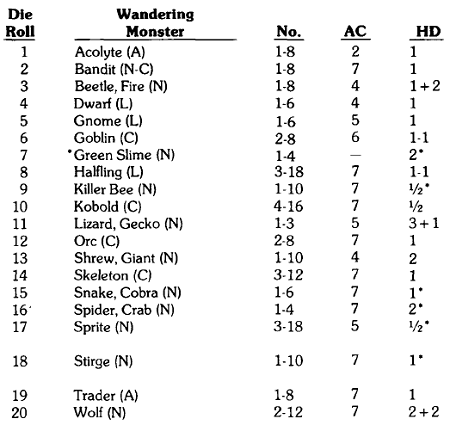
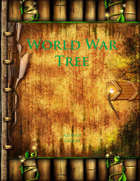 ‘In World War Tree the characters are in a town which has greatly expanded over the past two years, due to a moss found on local trees. As a result of this, the nearby forest has suffered extensively, with large numbers of trees torn down. The forest has now decided that enough is enough and a force of living trees, of the appropriate type, is descending on the town to rip it to pieces.’
‘In World War Tree the characters are in a town which has greatly expanded over the past two years, due to a moss found on local trees. As a result of this, the nearby forest has suffered extensively, with large numbers of trees torn down. The forest has now decided that enough is enough and a force of living trees, of the appropriate type, is descending on the town to rip it to pieces.’




